Jaisalmer Fort, which rises majestically in the middle of the Thar Desert in Rajasthan, is perhaps the only ‘living’ fort in the country today...
Why is it that most descriptions or travelogues of places within India or without, leave one with a vague feeling of dissatisfaction? Is it because absolute beauty sometimes defies description absolutely, that by the time the registered emotion finds its way through the morass of clichés and superlatives, it is lost hopelessly in translation? Whatever the reason, the legions of scribes will carry on writing, describing and eulogising, as long as there’s reason enough to do so.
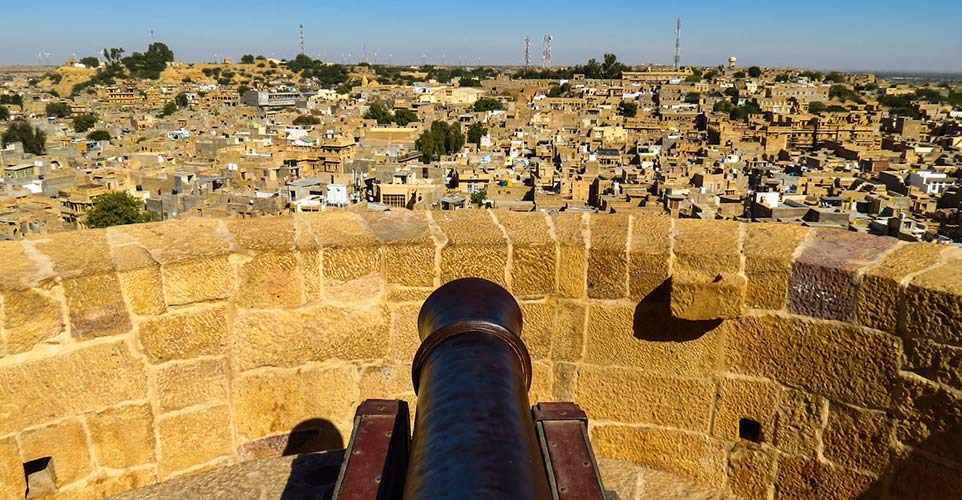
Which brings one to the subject on hand--that is, a moment or place that is so beautiful that it defies description. India has many places within its ambit that would classify under this head, but none as readily as Rajasthan’s Jaisalmer Fort. Even 15 km away from the fort, you can see its ramparts, rising like an anomaly from the sands around it. That’s until you approach it front-on and it takes your breath away by its sheer size and beauty. It could very well be the central character of a novel; certainly, its colours and moods seem to change at various times of the day.
At the break of day, the fort is swathed in the gentle colours of the rising sun, but later, the full brilliance of the sun converts the yellow sandstone facade of the fort into dazzling gold, earning it Satyajit Ray’s epithet, ‘Sonar Kella’ or ‘golden fort’, in the story and film of the same name. By night, Jaisalmer Fort is a sight to behold. Lights lighten up every nook and cranny, yet, it doesn’t take away from the saga and mystery that shrouds the citadel.
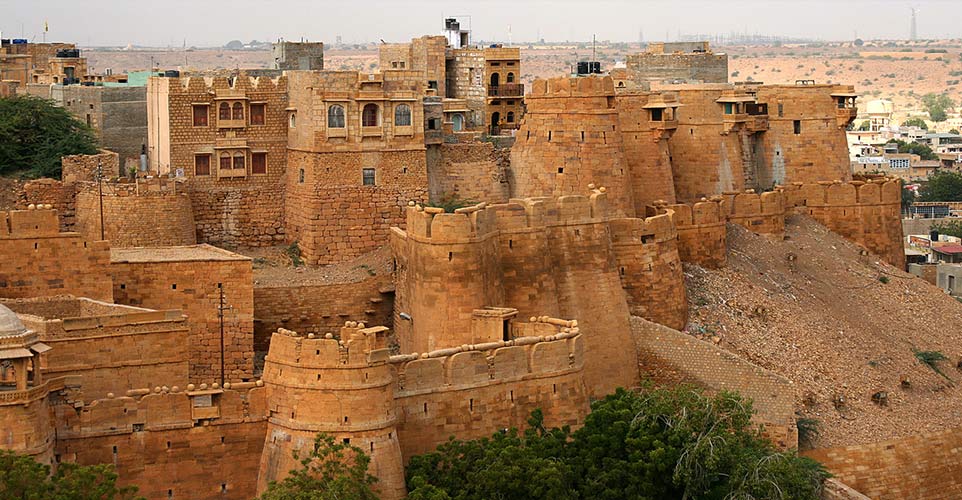
Sitting right in the middle of Thar Desert, atop Trikuta Hill, the Jaisalmer Fort is a five- storeyed structure built in traditional Rajasthani style. Standing tall at 250 m, from which vantage point you can see almost every part of town, the fort is built of jurassic yellow sandstone and is encompassed within three strong walls. It has 99 bastions, of which, 92 were built in the 17th century. Intricately carved screen windows, delicate pavilions and beautiful balconies adorn the facade, all of which makes for a very pretty picture.
And within the precincts of these imposing walls lies the heartbeat of the fort--the old city, where almost a quarter of modern Jaisalmer resides, making it perhaps the only living fort in India.
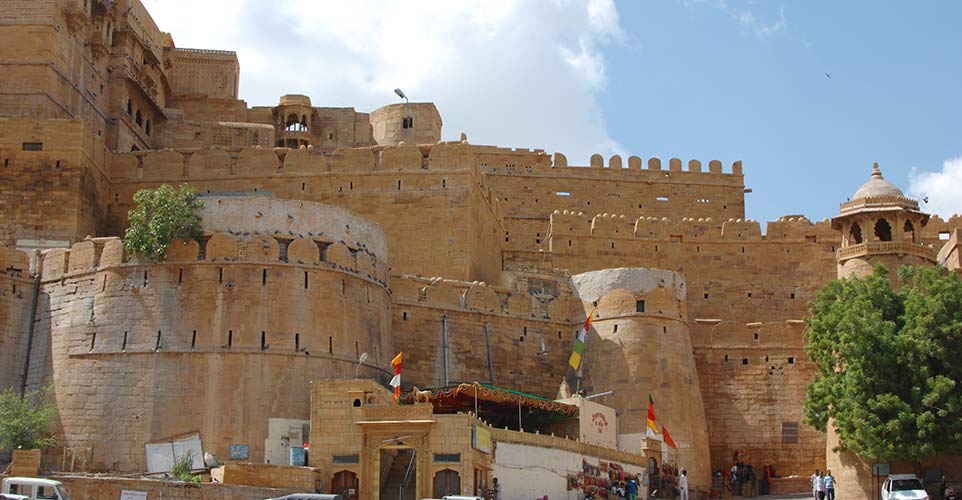
But first, a little about the antecedents of this great edifice. Legend has it that Lord Krishna, head of the Yadav clan, had spoken to Arjuna (one of the famed Pandava brothers from the epic Mahabharata), telling him that a descendent of the Yadav clan would build his kingdom atop the Trikuta Hill. And so, it was that the Bhatti chief Raja Jaisal, who was a Yadav, built the Jaisalmer Fort in 1156, thus fulfilling the prophecy.
There were many merchants who served in the royal courts of the Bhatti Rajputs, who were rich and powerful and it is to them that one can credit the construction and the elaborately carving of the havelis in the fort.
The Jaisalmer Fort has four mammoth gateways, called Ganesh Pol, Suraj Pol, Bhoot Pol and Hawa Pol. If you wish to make an entry into the main chowk, it is through the fourth gate, which is infamous because it was here that many acts of johar, or mass sati, took place. This is also the historic satiyon-ka-pagthiya, or the step of sati.

The fort has many temples dedicated to Surya, Vishnu, Shiva, Lakshmi and Ganesh, which are truly worth seeing, but it is the Jain temples which impress, with their thousands of exquisite carvings of deities and dancing figures on the ceilings and walls, all dating from the 12th-15th centuries. The temples are dedicated to the Jain tirthankars Rikhabdevji and Sambhavanthji. Inside the temples, there is a voluminous library that houses more than 1000 manuscripts, some of them inscribed on palm leaf. There is also a sizeable collection of Jain, pre-Mughal and Rajput paintings in the temples.
To the left of this palace entrance is where the king probably addressed his troops and issued orders from his throne. The interior of the palace is now a museum, where you can check out the details of the king’s 21 wives and their lineages. On display are royal clothes, weapons and thrones.
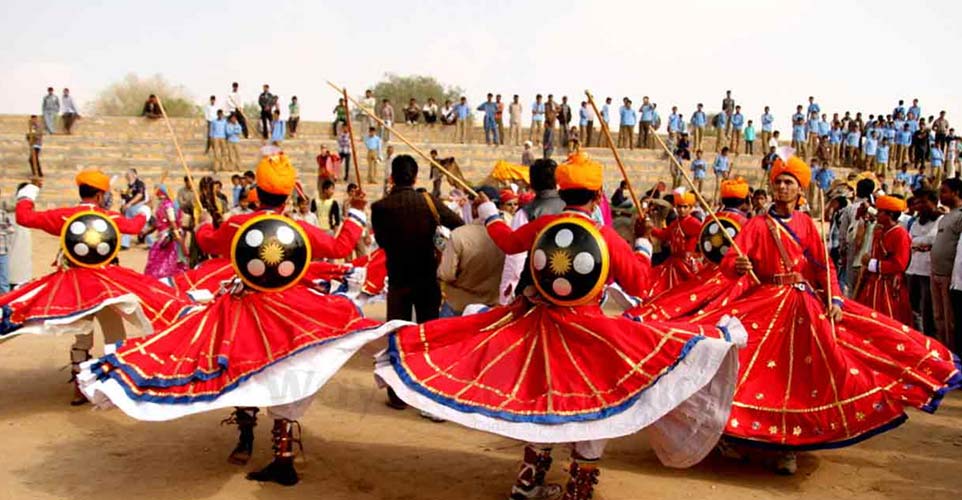
The five palaces inside the fort are Sarvottam Vilas, Akhai Vilas, Gaj Mahal, Rang Mahal and Moti Mahal. These palaces are exotic reminders of the great Rajputana architecture. The most famous of all the palaces--the Rang Mahal--also has mural paintings.
As you weave your way through the narrow lanes and bylanes of the entire living area within the fort, you can’t help but wonder at the sense of the past that is so incredibly alive in every nook and corner. The shops, the havelis with their jharokhas and jaalis, the temples and craftsmanship--all are to be savoured for posterity. If possible, make it to this town in the month of February, when camel safaris are popular as is the annual desert festival.
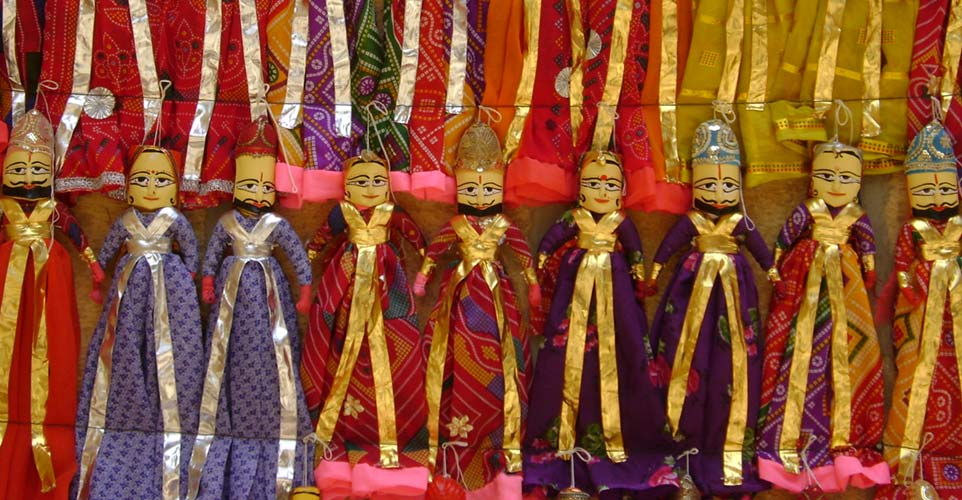
Being part of the Desert Triangle and the venue of the Desert Festival, the place is accessible by rail, road and air, and has tourist accommodations ranging from high-budget to low-budget. The Palace-on-Wheels, a unique train-cum-road package, which needs no description, makes a halt here.
